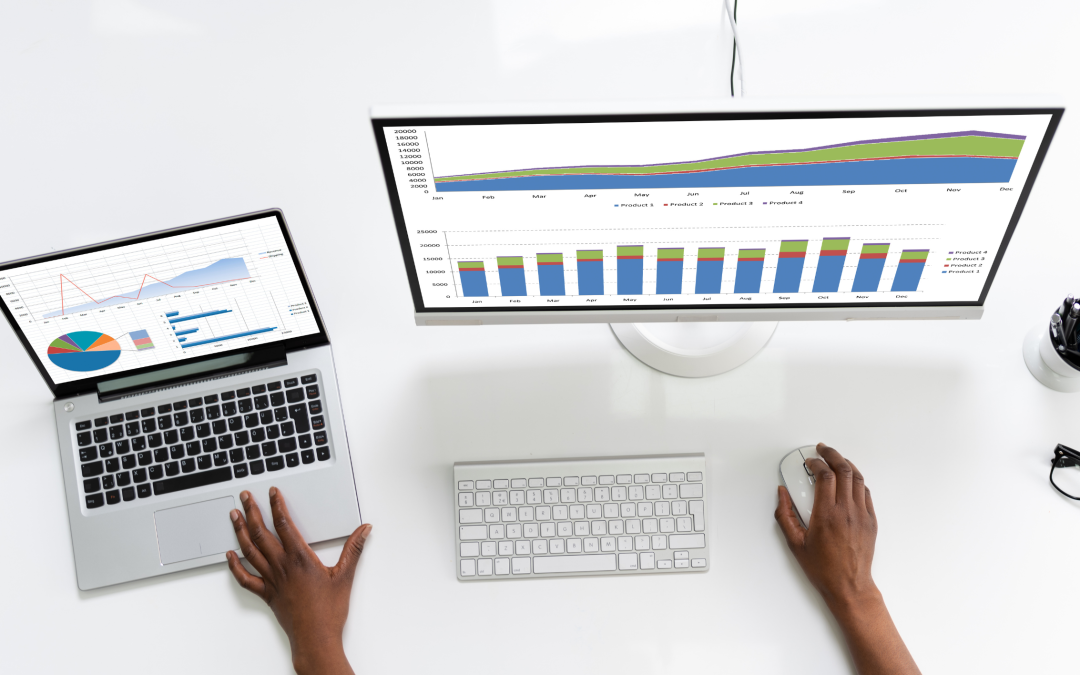Do you have an affinity for crunching numbers, reviewing data, and identifying patterns? Want to review massive amounts of information to guide decision-making and help businesses succeed in the ultra-competitive marketplace? Are you interested in an exciting data analyst career path in data analytics?
This article is for you if you answered yes to any of the above questions. Our experts outline the standard data analyst career path.
We start from the beginning and discuss how to land your first data analyst job. From there, we walk you through every prospective phase of your journey so that you can decide whether life as a data analyst is what you want to pursue.
Table of Contents
How to start a Data Analyst career?
What are the stages of a Data Analyst career path?
How much does a data analyst make?
How to start a Data Analyst career?
If you want to build a successful data analyst career, there are a few things you will need to do first. Before applying for vacant positions or scheduling your first job interview, you must:
Obtain a degree
The standard data analyst career path involves graduating from an accredited university or college. There are specific data analysis degree paths that you can pursue. The core classes in these programs will be uniquely suited for a career as a data analyst.
You will have a chance to perform real-world problem-solving with data analytics tools. While partaking in these programs, you will also need to learn basic programming languages to perform big data analysis and management tasks.
However, you can still land an entry-level position without majoring in data analysis. Prospective employers frequently hire individuals with broader economics, statistics, or mathematics degrees.
Even though these degrees will make you eligible for “entry-level” positions, you can expect a higher earning potential than professionals in many other fields.
If you possess a degree in a field not related to mathematics or data analysis, you can still pursue entry-level positions. But you may need to acquire some additional skills first. Perhaps the best way of obtaining data analytics abilities is to complete a certificate program.
Complete a certificate program
Think of data analytics certificate programs as “crash courses” that teach you real-world skills. The average data analytics certificate program lasts about six months and requires a commitment of approximately 10 hours a week.
These programs are ideal for individuals already in the workforce and those with major family obligations.
Although certificate programs are condensed, they still cover a broad range of information. While participating in a data analysis certificate program, expect to complete real-world projects and work with the latest analysis software. You will also learn the basics of data analysis.
Gain experience
Once you have obtained a degree, certificate, or both, it is time to gain relevant experience. You can do this in several ways. The most straightforward option is to begin applying for entry-level data analyst positions. Pay close attention to the posted job description to ensure that you possess the necessary skills.
Before submitting applications, you can also consider interning to bolster your resume a bit more. Many organizations have data analyst intern opportunities that will allow you to work with seasoned professionals within the field.
You will also get a chance to build relationships with hiring managers, which will be a huge asset if you apply for a paid position with the organization.
In addition to data analysis experience, you will also need to develop project management skills. While you will not be leading projects at the outset of your data analyst career, you will eventually take on more responsibilities as you advance within your organization.
What are the stages of a Data Analyst career path?
There are several pathways that you can navigate throughout your data analyst career. These pathways may include:
Entry-level Data Analyst career
Virtually every data analyst starts their career in an entry-level position. The exact responsibilities associated with this position will vary depending on the company you work for.
For instance, if a financial institution hires you, you will spend much of your time crunching numbers and looking for trends that could help your employer make more money.
A few additional examples of tasks include:
- Creating a data model
- Performing data validation
- Leading a data analysis project
- Perform data cleansing
As you can see, there are many possibilities.
Progress to a mid-level position
After you acquire a few years of experience as an entry-level data analyst, you may have an opportunity to progress to mid-level or senior positions. There are many different data analyst roles available throughout various industries. Some of the most common options include:
Data Scientist
In some organizations, experienced data analysts can be promoted to “data scientists.” Data science professionals perform high-level computations using analysis software and machine learning tools. These professionals will often be assigned major projects and may also be tasked with supervising junior analysts.
Data analysts take large datasets and perform data cleansing to transform raw information into usable intelligence.
Management
Management positions are most common in the financial sector. Banks, credit unions, and other financial institutions always look for talented data analysts with leadership qualities. If you obtain a management position, you may eventually be eligible for a senior-level role as a vice president or department head.
Specialist
Larger organizations often allocate data analysts to “specialist” roles. A specialist will often analyze a very specific type of data. They will then convert this information into a more digestible format and share their findings with decision-makers and stakeholders.
Consultant
Data analysts with strong interpersonal skills may earn a position as a consultant. These consultants typically deal with hedge funds, private equity firms, and big-time investors.
Consulting is one of the most lucrative data analyst roles other than becoming a VP of a major corporation. Insurance companies, healthcare organizations, and marketing firms may also hire data analyst consultants.
How much can you make? Data Analyst salaries by role
Two major factors are spurring the growth of the data analyst career field. First, data analysts are in high demand as more companies rely on big data to inform decision-making. Secondly, data analysts have a strong earning potential, even when taking on entry-level positions.
But just how much can you make as a data analyst? The answer is “it depends.” Data analyst pay will fluctuate depending on experience level, the size of the organization they work for, etc. We have outlined the average earnings of several different data analyst positions below.
Data Analyst
In the United States, entry-level data analysts can expect to earn between $69K and $88K annually. Once again, your specific earnings will depend on the state you work in, who you are employed by, and other factors.
Still, earning nearly $70,000 in your first year as a data analyst is an exciting proposition. Imagine how much more lucrative the career could be if you climb the ladder?
Data Scientist
Data scientist analysts have even higher earning potentials. These professionals can earn about $81K per year on the low end. However, the national average for data scientists is at $106K annually. The top 10% of data scientists can earn upwards of $139,000.
Naturally, earning potential generally increases with years of experience. Large corporations also tend to pay more for data scientists than small to medium-sized businesses.
Data Analyst Manager
If you are a people person and love crunching numbers, then you may have your sights set on becoming a data analyst manager in the future. Data analyst managers take on even more responsibilities than scientists as they oversee major projects and supervise a team of junior analysts.
These added responsibilities come with a sizable jump in pay. The median salary for a data analyst manager is $127,000 per year. The top 10% earn upwards of $150,000 annually.
Successful data analyst managers may earn the chance to become VPs or department heads. These positions come with an even higher salary and often include other benefits, such as stock options.
Consultant
Data analytics consultants have the largest fluctuation in earning potential. These professionals can earn around $50K per year on the low end. The average annual earnings are approximately $87K, or about $47 per hour. Data analytics consultants earn more than $160K a year on the top end.
Begin your journey to a Data Analyst career today
Now that we have outlined the major milestones on the data analyst career path, it is time for you to start your journey. But where to begin? Should you enroll in a four-year degree program, or is there a more streamlined option?
While earning a degree from an accredited university can certainly offer tremendous benefits, Pathstream’s certificate programs offer a more direct route to beginning your data analyst career. Our certificate programs include:
Each of the certificate options outlined above will teach you valuable skills. However, the Tableau Data Analytics Certificate is the most practical choice if you are new to data analytics.
This course covers the basic tenets of data review and analysis. It will also teach you how to use Tableau, one of the world’s most advanced data analytics platforms.
Ready to learn more? If so, then connect with one of our advisory staff today.
Was this helpful?
Thanks! What made it helpful?
How could we improve this post?








